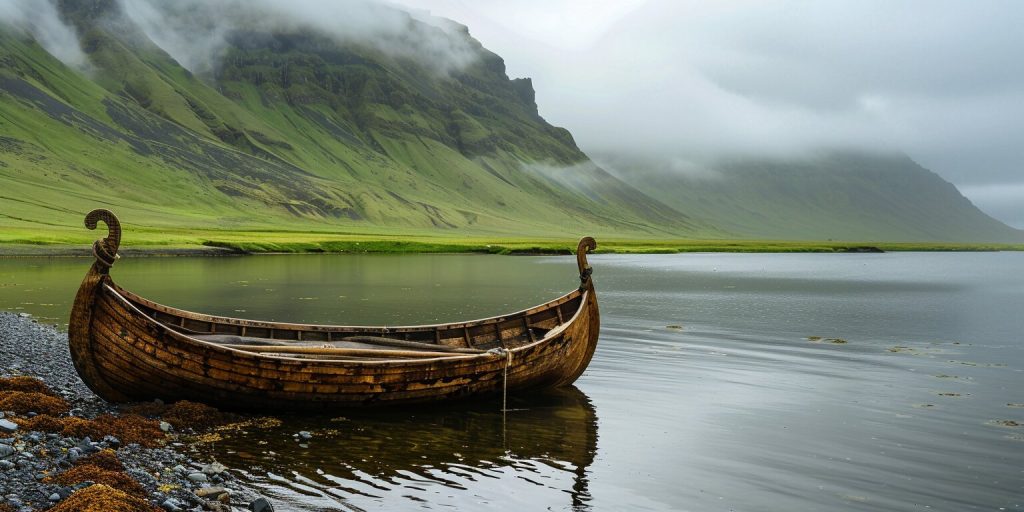Viking Heritage, Viking Sites, Vikings
Viking Sites in Iceland
Explore the captivating legacy of the Vikings in Iceland. Their ancient footprints are preserved in archaeological sites, museums, and reconstructed settlements. From the rugged north to the vibrant Reykjavík, Iceland lets you dive into these legendary seafarers’ rich history and culture, especially through Viking ruins in Iceland.
Visit well-preserved Viking archaeological sites in Iceland, including historical sites across Iceland, that highlight the ingenuity and resilience of the Norsemen. They settled on this remote North Atlantic island, leaving a lasting impact on the landscape and people. Discover Viking longhouses, uncover burial mound secrets, and witness their skilled craftsmanship.
Introduction
Iceland’s rich Viking heritage draws travelers who want to explore its history. This island was a key spot for Viking culture and features many historical sites. Vikings came here during the Viking Age and made lasting marks on the land.
Today, you can see Viking ruins and sites and experience the culture. Iceland is full of ways to learn about its Viking past.
The Icelandic sagas tell stories of the Icelandic Vikings. These stories, kept alive for years, talk about how Iceland was settled. They show how Vikings helped shape Iceland’s identity and traditions.
Visiting Iceland lets you see the landscapes that Vikings once knew. You can also dive into the lively Viking culture that is still alive today. It’s a perfect spot for anyone interested in the Viking world.
Featured Viking Sites
Discover Iceland’s Viking heritage at its famous sites. Thingvellir National Park and the Viking World Museum are key spots for understanding Iceland’s history and demonstrating the Viking era’s impact.
1. Thingvellir National Park
Thingvellir National Park is a key spot for Viking history lovers. It’s where the Alþingi, the oldest parliament, once met, and you can feel the presence of traditional Viking history in Iceland. This place shows the Vikings’ role in society through the ruins of a Viking settlement.
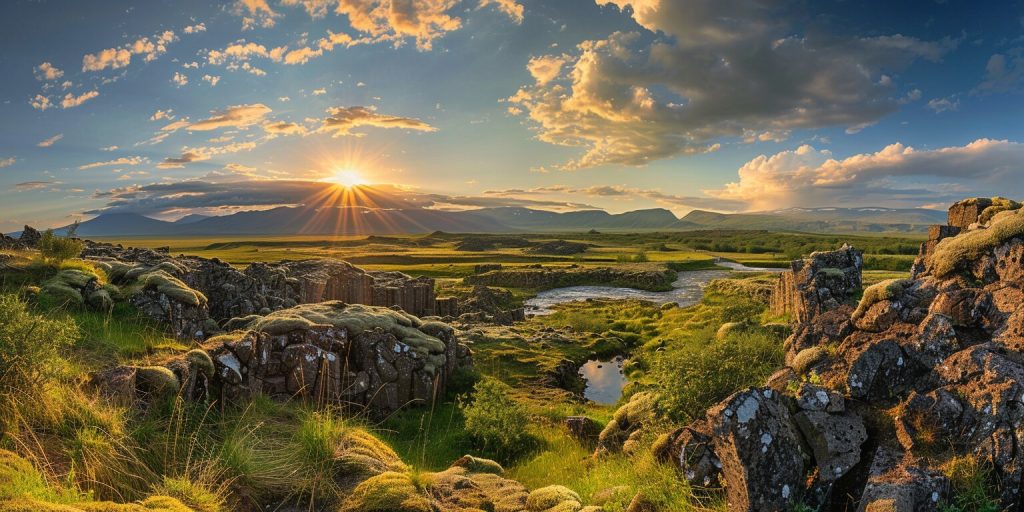
2. Viking World Museum
The Viking World Museum in Reykjanesbær has lots of Viking artifacts and models. You can see a Viking longhouse, Viking tools, and even get on a Viking ship. It’s a fun way to learn about Viking life, offering a real Viking experience.
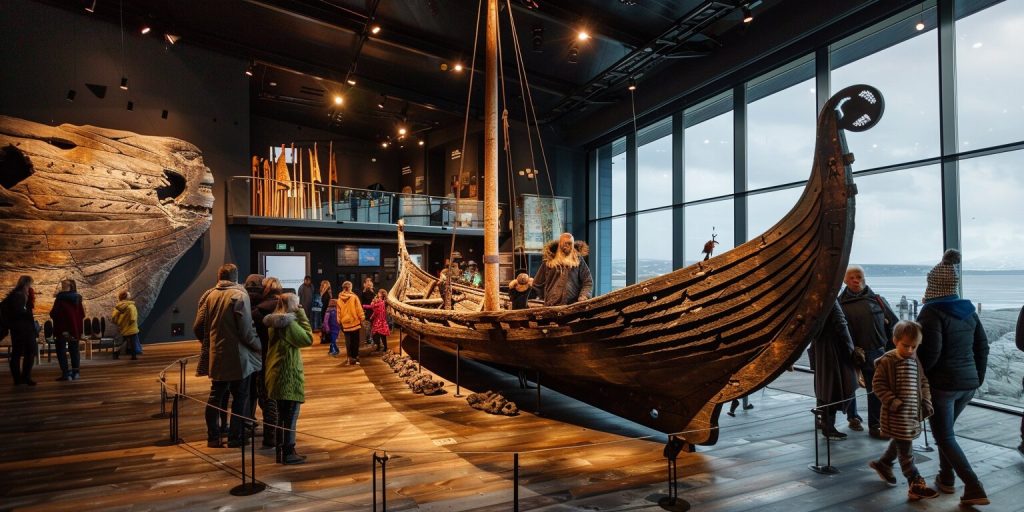
3. Settlement Exhibition (Reykjavík)
The Settlement Exhibition tells the story of Iceland’s first Viking settler, Ingólfur Arnarson. It shows what life was like for the early settlers in a traditional Viking house, including the longhouse and other important finds.
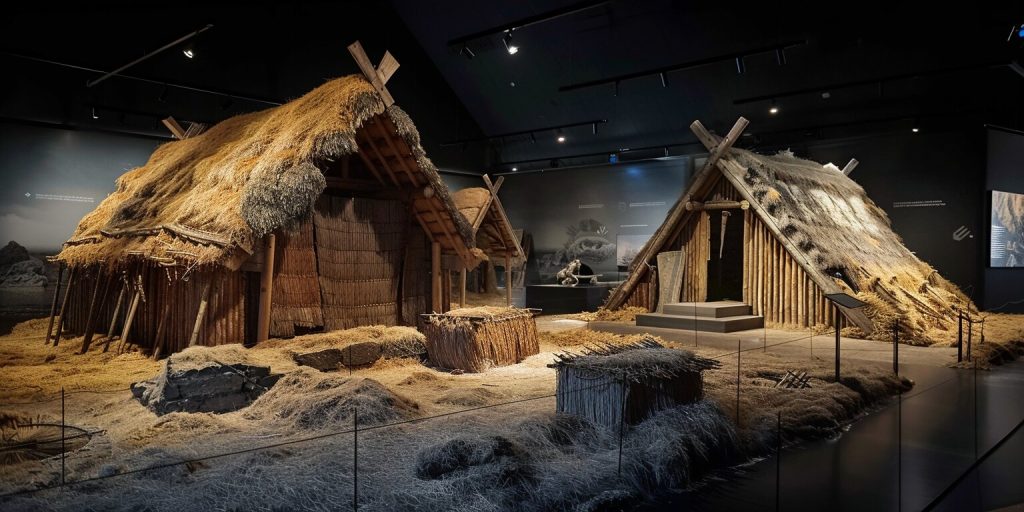
4. Eiríksstaðir (Erik the Red’s Farm)
Eiríksstaðir is Erik the Red’s farm in West Iceland. It’s a place where you can feel like a Viking farmer living in a traditional Viking house. There’s a longhouse, workshop, and more to see.
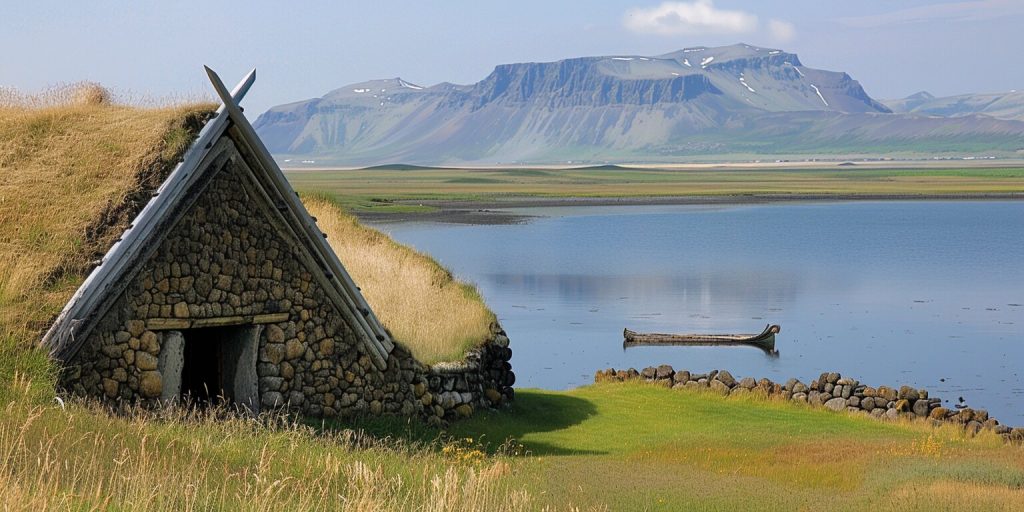
5. National Museum of Iceland
The National Museum of Iceland has many Viking artifacts, and it is one of the prominent Viking museums in Iceland. You’ll see swords, jewelry, and more. It’s a great place to learn about Viking adventures and their culture.
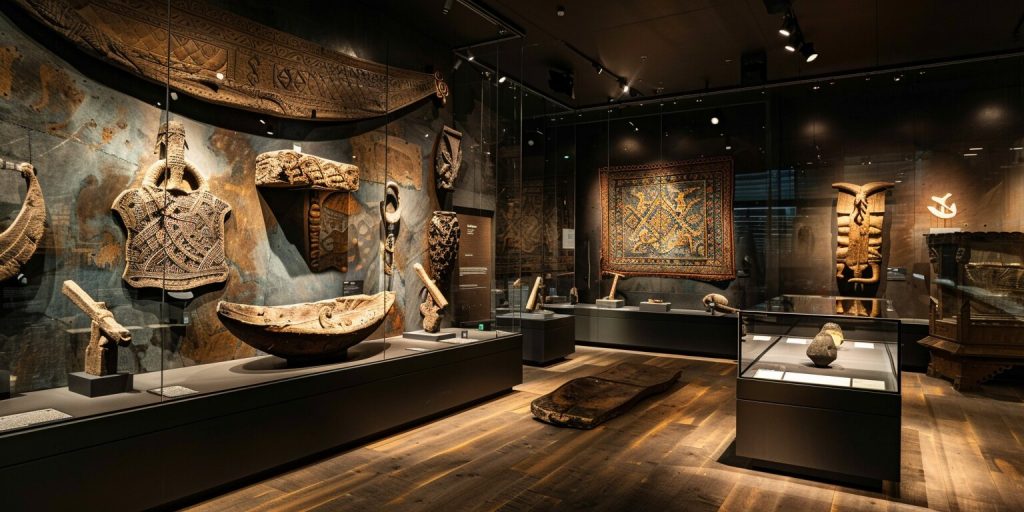
Travel Tips
Exploring Iceland’s Viking heritage is a must for travelers, especially at the National Museum of Iceland and other Viking museums. Whether you’re planning a full Viking tour or just want to see the best sites, these tips will help. They’ll make your trip unforgettable, particularly if you visit a replica of a Viking ship at one of the museums.
Best Time to Visit
The summer, from June to August, is the best time to visit Iceland. The weather is mild, and you get long days to see the Viking sites, especially the historic sites in north Iceland and around Iceland. But, consider spring and fall too for exploring Viking ruins in Iceland. These seasons have fewer people, and visiting Viking sites Iceland might be cheaper.
Getting Around
- Renting a car lets you explore Iceland’s Viking sites at your own pace.
- For a guided tour, join a Viking-themed trip that visits the best sites, including the Saga Museum in Reykjavík.
- Buses are another option, but they might not reach all the remote Viking sites in North Iceland.
Recommended Itinerary
Here’s a suggested itinerary for the best viking heritage experience:
- Begin in Reykjavík at the Settlement Exhibition to learn about Viking history.
- Then, visit Thingvellir National Park, a UNESCO site and home to Iceland’s historic parliament.
- Stop by the Viking World Museum in Reykjanesbær to see Viking artifacts and exhibits.
- Head to Eiríksstaðir, Erik the Red’s farm, to learn about Viking settlers’ lives.
- End your trip at the National Museum of Iceland in Reykjavík, with its vast Viking collection.
Follow these travel tips to discover Iceland’s fascinating Viking history and sites, from Reykjavík to Viking ruins in Iceland.
Cultural Insights & Viking History
Iceland’s rich Viking heritage is key to its identity, with numerous historic sites and museums showcasing its past. The Vikings arrived in Iceland in the late ninth century. Their mark is seen in the Icelandic sagas, architecture, and cultural events today, many of which are featured in the Saga Museum.
Old Viking sagas tell the story of Iceland’s settlement by Viking settlers like Ingólfur Arnarson. These stories give us a peek into the lives of Icelandic Vikings and show how these people shaped Iceland’s history, from the settlement to the Viking battles.
Iceland has Viking ruins, archaeological sites, and burial mounds, which connect us to the Viking age. The yearly Viking festival in Hafnarfjörður lets you unleash your inner Viking and experience authentic Viking culture up close.
Today, Icelanders are proud of their Viking heritage. They mix Viking style and Viking symbols into everyday life. Places like the Viking village at Fjörukráin and the Viking World Museum offer chances to dive deep into Iceland’s viking history. They help us see the lasting impact of the Vikings on this magical island.
Conclusion
Iceland’s Viking heritage is a key part of its history and culture. Thingvellir National Park and the Viking World Museum show us the world of the Norsemen. These Viking sites in Iceland let travelers explore the lives of the Vikings who lived here, including impressive Viking ruins in Iceland.
If you’re into the Icelandic sagas or just want to follow in the footsteps of Erik the Red, Iceland has much to offer, especially in places like the Saga Museum in Reykjavík. You’ll find sites in Iceland that make you appreciate the Vikings who made this place their home. A Viking tour in Iceland is perfect for those wanting to dive deep into the country’s history and visit historical sites.
When planning your trip to Iceland, make sure to visit these Iceland Viking sites. They tell stories that still excite people from all over the world. The unforgettable Viking experience makes your trip to this magical land even more special.

